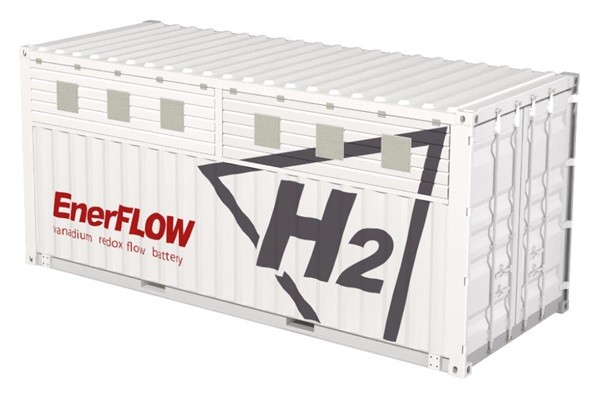South Korean Government has prepared a system that will allow VRFB (Vanadium Redox Flow Battery), which has zero chance of causing a fire, to be used within the ESS (Energy Storage System) market tied to new renewable energy. There is also a company that announced that it would enter relevant markets. It is expected that the system will provide energy to the ESS industry that has suffered significant blows due to fires that had taken place in succession and expand options of ESS.
According to South Korean Government and the industry, Ministry of Trade, Industry, and Energy (MOTIE) completed the revision of “an official announcement of regulation on promotion of spread of high efficiency energy material” on the 31st of January. This revision is the follow-up measure to MOTIE reviewing conditions within a regulatory sandbox in last April for bringing in a system that gives REC (Renewable Energy Certificates) weighted value when flow battery ESS is paired with renewable energy.
MOTIE states through the revision that flow battery has become an energy material with high efficiency in addition to lithium-ion rechargeable battery and that REC business is now possible institutionally based on RPS (Renewable Portfolio Standard). This means that a power plant with an ESS based on flow batteries sells electricity to Korea Electric Power Corporation (KEPCO), it will receive weighted value of REC 5.0.
Flow battery uses water-based electrolyte and has zero chance of causing a fire. It is much safer than a lithium-ion rechargeable battery that uses flammable electrolyte. It is semi-permanent and it is very easy to reuse a flow battery. However, its efficiency somewhat falls short compared to that of a lithium-ion rechargeable battery. Also, it lacks price competitiveness compared to lithium and lead batteries and marketability.
NFPA (National Fire Protection Association) confirmed the fact that flow battery has high safety level as degrees of risk towards harmfulness, flammability, and chemical reactivity are all low compared to lithium battery. Also, KEPCO Management Research Institute predicted that flow batteries will become a norm within the ESS market as companies continue to improve flow batteries and drastically improve economic feasibility of flow battery as a result.
 <H2’s EnerFLOW 430 paired with photovoltaic generation>
<H2’s EnerFLOW 430 paired with photovoltaic generation>There is also a company that announced that it would become the first company to enter the “flow battery-based ESS paired with photovoltaic generation market” as MOTIE has improved the system.
H2, a South Korean ESS maker, finished the development of “EnerFLOW 430” and it is currently discussing with private power plants and public energy companies about constructing EnerFLOW 430 at their sites. It is planning to install South Korea’s first flow battery-based ESS at a power plant by end of this year. Such installation will be the first case of connection between a commercial facility and KEPCO’s power transmission and supply networks. It is heard that another company that specializes in battery is also showing interest on the market.
It is meaningful to see a next-generation battery being used within the ESS market where only lithium-ion rechargeable battery was used. It seems that South Korean Government has expanded the REC weighting scheme considering many positive factors such as “level of safety of ESS” and “development of a next-generation battery”. Just as South Korea had led installation of 25% of lithium battery-based ESS in the world, vitalization of South Korea’s flow battery-based ESS market can help South Korea to grab the upper hand of relevant foreign markets.
There are also huge expectations that introducing flow battery to the ESS market will be a turning point for the market that has struggled due to recent ESS fires. As total of 28 fires had occurred from August of 2017 to October of 2019 due to lithium-ion rechargeable battery ESS, relevant industries have faced crisis while the market size had shrunk from 5.6GWh in 2018 to 3.7GWh in 2019. Because 5 fires involved ESS paired with photovoltaic generation according to the investigation results from a second joint private and public investigation group, some were concerned that South Korea’s new renewable energy industry would also take a blow as a result. However, it seems that the ESS industry will be able to recover quickly as the government is improving relevant systems and as private companies are forming a new market.
“Introducing flow battery to the ESS market paired with renewable energy where only lithium-ion rechargeable battery was used will give renewed energy to the ESS market that has struggled and will be a turning point for the market as it expands options for consumers.” said a representative for the industry.
Staff Reporter Choi, Jaepil | jpchoi@etnews.com
Copyright © The Electronic Times Corp. & The Electronic Times Internet Corp. All Rights Reserved.
